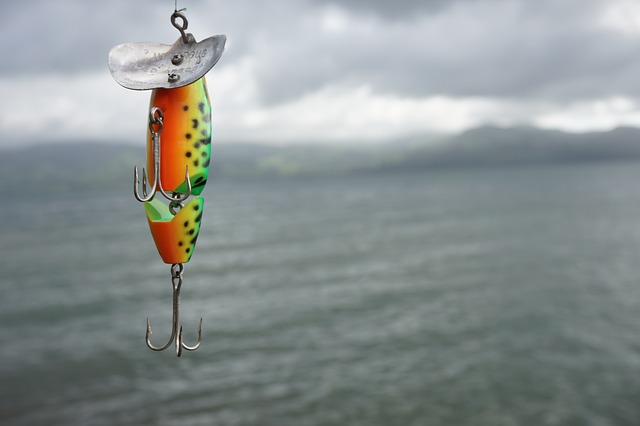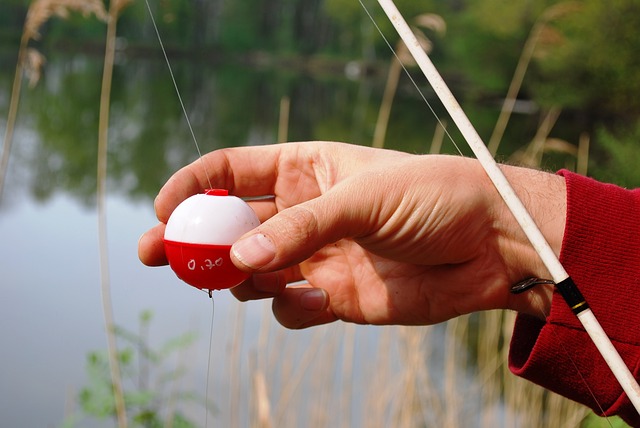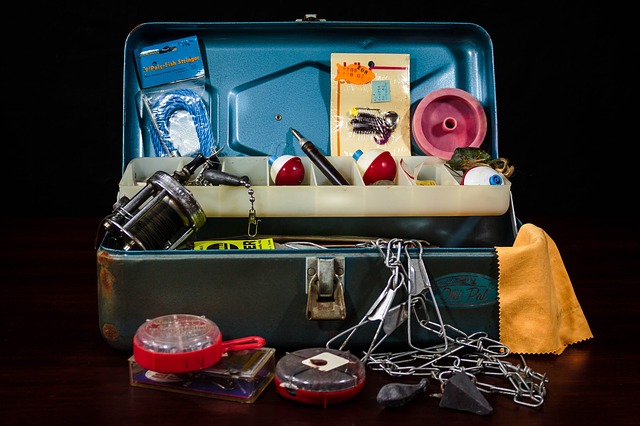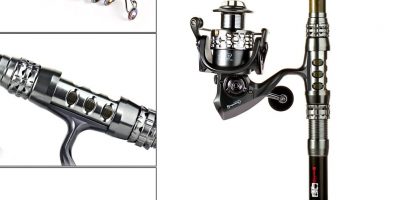Fishing activity is generally broad as the target species that you are aiming for actually involves a plethora of types. Moreover, there is also different fishing equipment involved. One of them is the terminal tackle, but some beginners may still want to be enlightened with what is terminal tackle. In this blog post, let us discover this kind of fishing equipment.
What is Terminal Tackle: A Quick Overview
In general, the terminal tackle is located to the end or at least close to the tip of the fishing line. Most of the time, the method of attachment of this fishing tackle may either be through tying, clipping, or sliding. Moreover, when it comes to defining what is terminal tackle, you may find that its category is as broad as that of the lures and fishing baits.
The common materials used in making a terminal tackle include foam, lead, plastic, stainless steel, tin, tungsten, and wood. However, each piece of the terminal tackle has a size that generally depends on the target fish species. Additionally, once an angler is confident about what is terminal tackle, it can generally have a dramatic effect on being successful in the water.
What is Terminal Tackle: Its Different Categories
The terminal tackle is usually categorized based on the following categories:
Hooks
In case you want to know what is terminal tackle and what its categories, the hooks tend to be the most important for most anglers. High-carbonized steel, stainless steel, or steel alloyed with Vanadium are the materials from which the hooks come from. Aside from that, it also has various shapes, sizes, colors, and designs.

Hooks, to catch a fish, maybe paired with either a lure or bait. That way, the hooks are also kept on the line while reeling is on. The hook is sometimes used as a design for lures and artificial baits. Meanwhile, there are a few that can be used to achieve optimal performance.
Weights and sinkers
If you want to quicken the spot in which the hook and lure will usually sink, use the weights and sinkers. Another use of this terminal tackle category is to incorporate additional weight to elevate the probable cast distance.
The weights and sinkers have a broad range of shape and size selection. From one gram, being the smallest up to at least greater than 5 ounces as the maximum is the typical size range of the weights and sinkers. Moreover, tungsten, lead, tin, and an eco-friendly material are the ones used for making the weights and sinkers.
Floats, Bobbers and Indicators
These three terminal tackles category has the main function of floating in the water, over the bait, or during attachment to the fishing line. Moreover, afloat may be pulled below the water once a fish bites on the hook within the line. This fishing item will also allow the anglers to have an idea of the exact location of the lure under the water.
To achieve their main objective of floating into the water, these items come from some materials that support buoyancy. These are balsa, cork, plastic, yarn, and foam. Pencil and stick, and round and drift are the common types of floats and bobbers available.
Swivels and Snaps
Swivels and snaps are other categories that will help you define what terminal tackle is. Its main use is to connect the line coming from rod to lure. Yet, the difference between the two is that the swivel allows the twisting and turning of the lure in the water without affecting the line’s integrity.
In contrast, the snaps serve as the firm connection that exists amidst the fishing line and the lure rather than twisting the latter. The swivels involve different types on which some types have two rings or three rings. Ball bearings and lock or twist in a barrel motion are the other two types of swivels.
Split rings and Sleeves
The one that connects the lure and the hook is the split rings. This piece of the terminal tackle has the advantage of incorporating on the lure or hook.
Bait rigs
When you use the bait rigs, multiple bait hooks are present and attached as it is considered an extension of the fishing line. The use of the bait rigs is very simple. You just need to connect it to the fishing line, drop it in the water, and eventually, pull it up very quickly. Since there are multiple hooks attached on the line, catching bait only takes a short time.
General, several bait rigs have small hooks and feathers to attract the target fish. Bait rig types include the minnow, crappie, and sabiki.
Important Must-Haves on a Fishing Tackle Box
In fishing, the tackle box is the main equivalent of the toolbox. Actually, the personal choice of the anglers highly defines his personality or type of target he wants to get based on what is in the tackle box. However, it is very important to learn that every tackle box must primarily contain some basic items.
Basically, when you come to think of it, the fishing tackle box has terminal tackles that should be attached to the end of the fishing line. But, aside from that, there are other important fishing items that you must have to place inside the tackle box. Check below what are those:
1-Additional line
Well, regardless of the reason is, there will generally be the time that the fishing line will get tangled or, worse, will break. Because of that, it is very important to have this inside the fishing tackle box. Moreover, also carry different types of lines as you will be dealing with different kinds of species.
For instance, a more durable and heavier fishing line is generally needed for fishing within rough waters. Yet, the thin clear line is perfect for crystal clear lake water.
2-Reserve hooks
When we define what terminal tackle is, we learned that hooks are one of the categories of it. So, it is obvious that hooks should not be excluded from the content of the tackle box. Having variations of hooks inside the tackle box is generally advantageous in dealing with any sort of target species.
There is the J-hook, the French hook, and a lot more. Yet, regardless of the hook type, just ensure that it comes in different sizes inside the box. Keep in mind that the sizes for the hooks usually range from 32 as the smallest up to the largest size of 19/0.
3-Some bobbers and floaters
Basically, bobbers and floaters are great indicators that there is already something biting into your bait under there. The bobber normally sinks when there is a fish bite. When you already feel that way, get ready to reel in to have that catch.
The exciting thing about the terminal tackle is that they come in a variety of sizes, shapes, designs, and colors. For the bobbers, the round red and the white plastic are the most commonly seen. The use of round bobbers is so easy, simply clip them to the fishing line and that’s it. But, the downside is the depth of casting the line is actually limited.

So, if you are opting for getting a hook into the deeper part of the water, you can use the slip bobber, another type of bobber. This one enables you to slide the bobber up and down within the line. However, in terms of rigging, this bobber type highly requires more time. Yet, many anglers assume that the effort is really worth it.
Just a beginner here and want something more easier? Well, you can opt to do the old-school style. Just a piece of cork with a stick, tie it on the line and you’re ready to go.
4-Numbers of sinkers
Well, sinkers are important to add some weight to the hook and worm. The latter is a way to light to get deep and stay down the water. Unfortunately, many anglers swear that they almost lost several sinkers. That’s why having extra numbers of it inside the tackle box is really essential. Yet, some states are restricting the use of the sinkers, especially those that are made of lead, due to environmental issues.
5-Plastic worms
Live baits are generally good to use when you are fishing, but having plastic worms inside the tackle box is also good especially during bass fishing. Again, just like the other terminal tackle, the plastic worms have variations in colors and sizes. Grab the one with long tails because they are generally easier to use.
6-Pair of lures
Storing the tackle box with some complex lures is actually a good idea to heighten up the fishing activity. Choosing the lure is actually fun and exciting because there are too many of it lining up. It actually includes the minnow replicas and spinners and spoons as some of its type. Actually, selecting the lure that you want to use highly depends on your preference. Check on and look at what you think works best. Afterward, keep some of it inside your tackle box.
7-Needle nose pliers
If you’ll need some to take the hook out after having a catch, don’t forget to have inside needle-nose pliers.
8-Line cutter
There are times that you literally want to cut off the line. If this is the case, you need to include the pocket knife on the tackle box. Moreover, a nail cutter can also do the job well done. Aside from being very handy, it is more efficient and quicker to use than the knife.
Ways of Organizing a Terminal Tackle Box
Fishing tackle box or, sometimes, they tend to call it a terminal tackle box because the majority of the contents are the terminal tackles. Since terminal tackles are usually handy in size and shape, organizing them inside the box is really challenging. Small items such as swivels and snaps or split rings may never stay in their place. That’s why organizing them inside the tackle box is very important. More than that, it saves you time and frustration during fishing.

*Select the appropriate tackle box
The traditional tackle boxes basically resemble the look of the typical lunch boxes. But, having an idea of what is in the terminal tackle box, you may want it to have dividers inside. This is generally advantageous for those items that are movable. Moreover, you can also customize the size and the numbers of the lures that you are going to store inside.
*Organize depending on the target species
One of the best methods of organizing the tackle box is having an idea of what species you are going to fish and organize the box depending on it. For instance, knowing that you will be going to catch trout means that you will be keeping the trout lures altogether. Actually, it is really nonsense to bring out the lures for pikes if what you opt for a perch.
*Organize based on color
Color management is actually a good idea in organizing the tackle box especially if there are lots of soft baits. For example, group plastic worms with the same color on a single compartment.
*Organize according to types
It is also advisable to organize the lures depending on their type. There are the jigs, flies, and crankbaits. Having them in one area inside the box may make you easily know where to locate them. Remember to separate the hard baits from the soft ones.
Moreover, labeling the compartment is a good idea, most likely if you have a big collection of fishing items. This generally keeps you away from sorting out the lures later on.
Final Words
Defining what terminal tackle is actually easy to determine. You just need to identify each of the categories that fall under this fishing item. This means if you want to know what terminal tackle is, check the hooks, baits and rigs, swivels and snaps, floaters, bobbers, weights, and sinkers. From there, you will generally have an idea of its use and its importance in fishing.


